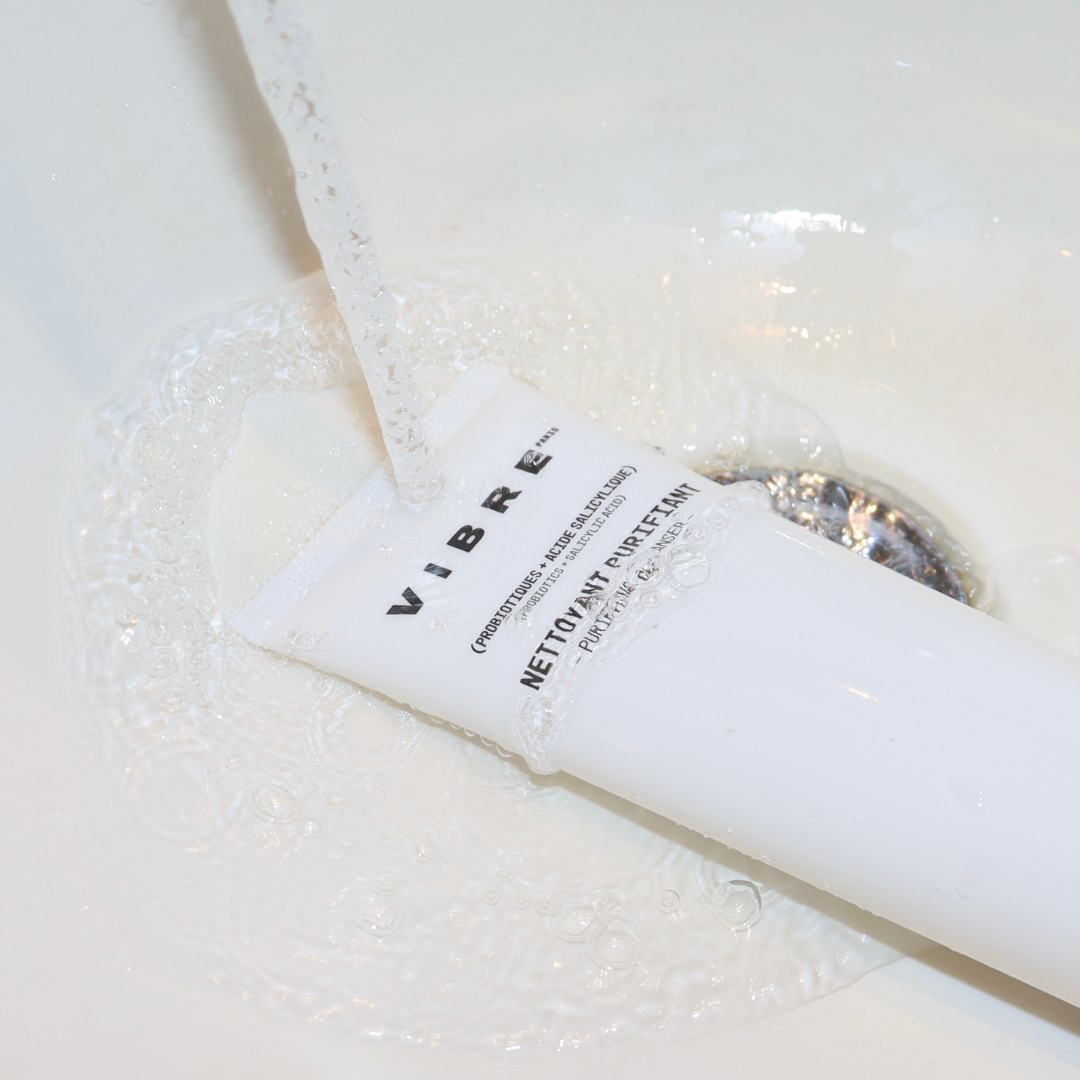
How do I get rid of microcysts?
Share
What are microcysts?

A microcyst is a small skin lesion that appears when a hair follicle (or skin pore) becomes clogged with secretions and dead cells. Unlike blackheads( opencomedones ) or whiteheads (closed comedones), microcysts are not always immediately visible on the surface, but can appear as small bumps or protuberances under the skin. Here's a more detailed explanation of what a microcyst is:
Characteristics of Microcysts
-
Size and appearance:
- Microcysts are generally small, measuring 1 to 2 millimeters in diameter. They appear as small bumps beneath the surface of the skin, often without inflammation visible to the naked eye.
-
Training :
- Microcysts form when hair follicles become clogged with excess sebum (oil produced by the sebaceous glands), dead cells and sometimes bacteria. This obstruction creates an environment where sebum cannot drain properly. They are often found on the nose and chin.
-
Closed Comedo:
- Microcysts are a type of closed comedo. Unlike blackheads, which are open comedones exposed to air and oxidized, microcysts are closed, preventing air from reaching them and making them harder to see.
What causes microcysts?
-
Excess sebum: The sebaceous glands produce sebum to lubricate the skin. When this production becomes excessive, it can clog pores, leading to the formation of micro-cysts.
-
Dead skin cells: A build-up of dead skin cells can also contribute to clogged pores, promoting theappearance of micro-cysts.
-
Hormonal fluctuations: Hormonal fluctuations, such as those seen during menstruation or pregnancy, can increase sebum production and aggravate microcysts, regardless of your skin type.
-
Oily skin: People with oily skin are more likely to develop microcysts due to overproduction of sebum and clogged pores.
-
Inadequate skin cleansing: Insufficient cleansing or the use of inappropriate products can exacerbate skin problems and encourage the formation of microcysts.
How do I get rid of microcysts?
Here are some effective strategies for treating and preventing microcysts:
-
Regulate sebum production
- Use suitable cleansers: Choose gentle cleansers containing ingredients such as salicylic acid or glycolic acid, which help dissolve sebum and gently exfoliate the skin.
- Mattifying products: Mattifying lotions and gels can help controlexcess sebum and reduce shine, particularly useful for oily skin.
-
Exfoliate Regularly
- Chemical exfoliation: Exfoliants containing alpha-hydroxy acid (AHA) or beta-hydroxy acid (BHA) can help remove dead skin cells and clear pores.Salicylic acid is particularly effective at penetrating pores and reducing closed comedones.
- Physical exfoliation: Use gentle scrubs once or twice a week to help unclog pores and prevent the build-up of dead cells.
-
Using anti-inflammatory treatments
- Anti-inflammatory creams and serums: Products containing ingredients such as aloe vera, chamomile or niacinamide can help reduce inflammation and soothe the skin.
- Soothing masks: Masks containing ingredients like clay or activated charcoal can help purify the skin and reduce microcysts.
-
Avoid Comedogenic Products
- Choose non-comedogenic cosmetics: Make sure your make-up and skincare products don't contain ingredients that can clog pores.
- Light moisturizers: Opt for oil-free moisturizers that won't aggravate sebum problems or clog pores.
-
Maintain a rigorous cleaning routine
- Daily cleansing: Wash your face twice a day to remove excess sebum and impurities. Make sure you rinse well and leave no cleanser residue.
- Thorough cleansing: Cleanse your skin thoroughly every evening to remove make-up and impurities.
-
Consult a dermatologist
- Professional treatments: For persistent or severe microcysts, consult a dermatologist for more intensive treatments, such as chemical peels or light therapy.

How can I prevent microcysts?
To prevent the appearance of microcysts, it's essential to maintain a proper skin care routine and adopt a healthy lifestyle. Avoid touching your face with dirty hands, change your pillowcases regularly, and eat a balanced diet rich in fruits, vegetables and skin-friendly fatty acids.

